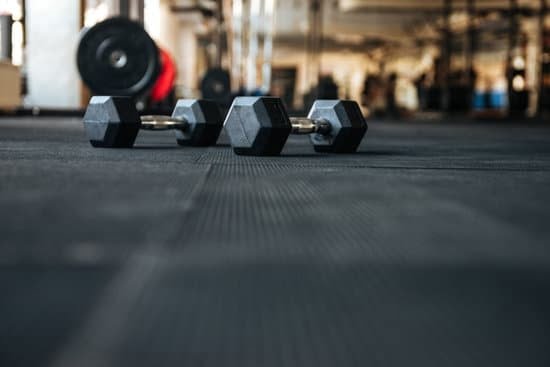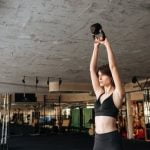Have you ever wondered how much do fitness models exercise? The world of fitness modeling often comes with a certain level of fascination and curiosity. Many people are curious about the intense exercise routines, the strict diets, and the overall dedication required to maintain a fit and toned physique. In this article, we will delve into the lifestyle of fitness models, particularly focusing on their exercise habits and the impact on their lives.
Fitness models are known for their commitment to physical fitness and overall well-being. From grueling workout schedules to strict nutrition plans, they lead an incredibly disciplined lifestyle. But just how much time do they actually dedicate to exercising? What does a typical day in the life of a fitness model look like in terms of physical activity?
We will explore daily workout routines, training methods, rest and recovery, diet and nutrition, as well as the mental and emotional toll that comes with being a fitness model. Whether you’re interested in pursuing a career in fitness modeling or simply curious about the behind-the-scenes of this industry, this article aims to provide insight into the rigorous exercise habits of fitness models and how it shapes their lives.
Daily Workout Routines
Fitness models are known for their sculpted physiques and toned bodies, and this is largely due to their intense exercise schedules. A typical day for a fitness model often includes multiple workouts, sometimes focusing on different muscle groups or types of training. These individuals are committed to maintaining a high level of physical fitness, which requires dedication to regular and challenging exercise routines.
One key element of a fitness model’s daily workout routine is resistance training. This type of exercise helps build lean muscle mass and increase overall strength, both of which are essential for achieving the desired aesthetic in this industry. Many fitness models incorporate weightlifting, bodyweight exercises, and other forms of resistance training into their daily workouts.
In addition to resistance training, cardiovascular exercise is also a crucial component of a fitness model’s daily workout routine. Activities such as running, cycling, and high-intensity interval training (HIIT) help improve cardiovascular health and burn calories, supporting the maintenance of low body fat levels. The combination of resistance training and cardio work makes for a comprehensive exercise regimen that contributes to the overall physical appearance and performance of fitness models.
| Fitness Model Workout Components | Examples |
|---|---|
| Resistance Training | Weightlifting, bodyweight exercises |
| Cardiovascular Exercise | Running, cycling, HIIT |
The Importance of Rest and Recovery in Fitness Modeling
Fitness models are known for their intense workout routines and dedication to physical fitness. However, one aspect that is often overlooked is the importance of rest and recovery in achieving peak performance. Many people assume that fitness models are constantly pushing themselves through grueling workouts, but the truth is that they also prioritize rest and recovery to ensure that their bodies can handle the demands of their training.
Rest and recovery play a crucial role in the fitness model lifestyle, as it allows the body to repair and strengthen itself after intense workouts. Without adequate rest, muscles do not have time to recover, which can lead to fatigue, decreased performance, and an increased risk of injury.
Fitness models understand the value of giving their bodies time to recuperate, whether it’s through a day off from training or incorporating active recovery exercises such as yoga or stretching into their routine.
In addition to physical rest, mental and emotional recovery is also important for fitness models. The pressure to maintain a certain physique can take a toll on mental well-being, so finding ways to relax and recharge outside of the gym is essential. Whether it’s meditation, spending time with loved ones, or engaging in hobbies, fitness models prioritize activities that help them unwind and reduce stress levels.
| Resting & Recovery Methods | Benefits |
|---|---|
| Incorporating active recovery exercises such as yoga or stretching | Prevents muscle fatigue and decreases the risk of injury |
| Meditation and engaging in hobbies outside of fitness modeling | Reduces stress levels and helps maintain mental well-being |
A Look at the Training Methods and Techniques Used by Fitness Models
Fitness models are known for their sculpted physiques and toned bodies, and it’s no secret that achieving and maintaining such a level of fitness requires dedication and hard work. In this section, we will delve into the training methods and techniques commonly used by fitness models to achieve their enviable look.
Resistance Training
One of the key components of a fitness model’s workout routine is resistance training. This type of exercise involves using weights, resistance bands, or bodyweight exercises to build strength and muscle definition. Fitness models typically incorporate a variety of weightlifting exercises into their regimen, focusing on different muscle groups on different days for a balanced approach to training.
High Intensity Interval Training (HIIT)
In addition to traditional weightlifting, many fitness models also incorporate HIIT workouts into their training routine. HIIT involves short bursts of intense exercise followed by brief rest periods, designed to maximize calorie burn and improve cardiovascular fitness. This form of training is popular among fitness models for its efficiency in burning fat and increasing overall endurance.
Focused Core Workouts
Core strength is essential for fitness models, as it contributes to overall stability and posture. As a result, many include targeted core workouts in their exercise routine. These exercises may include planks, Russian twists, bicycle crunches, and other movements that engage the abdominal muscles.
By utilizing these various training methods and techniques, fitness models are able to attain the lean and defined physique that is synonymous with their industry. It’s important to note that while these workouts are effective in achieving physical results, they must be combined with a well-rounded diet and sufficient rest in order to maintain overall health and wellness.
The Role of Diet and Nutrition in the Fitness Model Industry
The fitness model industry is not just about working out for hours on end; it also heavily relies on proper diet and nutrition to achieve the desired physique. Fitness models understand the crucial role that food plays in their overall fitness journey and prioritize healthy eating habits. Here’s a closer look at the importance of diet and nutrition in the world of fitness modeling:
- Macronutrient balance: Fitness models carefully balance their intake of macronutrients such as carbohydrates, proteins, and fats to fuel their workouts and support muscle growth.
- Meal planning: Planning and preparing meals in advance is essential for fitness models to ensure they are getting the right nutrients at the right times. This often involves cooking in bulk and having meals ready to go throughout the week.
- Supplementation: While whole foods are prioritized, many fitness models utilize supplements such as protein powders, creatine, and BCAAs to support their training and recovery.
In addition to shaping their physical appearance, diet plays a significant role in maintaining overall health and well-being for fitness models. They understand that what they put into their bodies directly impacts how they look and feel, which is why they prioritize nutrient-dense foods that provide the energy and sustenance needed to keep up with their demanding workout routines.
Ultimately, diet and nutrition are integral components of the fitness model lifestyle. It’s not just about looking good on the outside; it’s about feeling good from within, and that starts with making conscious choices about food consumption. The careful attention to what they eat allows fitness models to achieve optimal performance in the gym while promoting overall health and longevity.
Balancing Fitness Modeling With Other Commitments
Balancing a demanding fitness modeling career with other commitments can be quite challenging. Fitness models have to juggle photoshoots, appearances, and fitness competitions with their personal lives, jobs, and education. Time management is crucial for staying on track and achieving success in all aspects of life.
Creating a Schedule
One of the most effective time management tips for fitness models is to create a detailed schedule that includes both their modeling commitments and personal responsibilities. By blocking out specific time slots for workouts, meal prep, work, and leisure activities, fitness models can ensure that they stay on top of everything without feeling overwhelmed.
Prioritizing Tasks
It’s important for fitness models to prioritize tasks based on their urgency and importance. This means allocating more time and energy to crucial modeling assignments while still making room for essential self-care activities like sleep, relaxation, and socializing. Learning to say no to non-essential commitments can also help in managing time more efficiently.
Utilizing Efficient Workouts
With jam-packed schedules, fitness models often don’t have hours to spend at the gym. Therefore, incorporating high-intensity interval training (HIIT) or circuit workouts into their exercise routines can be beneficial. These types of workouts are shorter in duration but still highly effective in burning calories and building strength, saving valuable time without sacrificing results.
Overall, finding a balance between the demands of fitness modeling and other commitments requires discipline, strategic planning, and the ability to adapt to unexpected changes in schedules. By implementing these time management tips and staying organized, fitness models can navigate their busy lives with greater ease and effectiveness.
The Mental and Emotional Toll of Being a Fitness Model
Aspiring to become a fitness model may seem like a glamorous and exciting career choice, but many individuals may not be aware of the mental and emotional toll that comes with it. The stereotype of the “perfect” body image often places immense pressure on fitness models, leading to various challenges in their personal lives. Here are some key points to consider when it comes to understanding the mental and emotional aspects of being a fitness model:
- Societal Pressures: Fitness models are often expected to maintain a certain physique that conforms to society’s standards of beauty. This constant pressure to look a certain way can lead to self-esteem issues, body dysmorphia, and even eating disorders.
- Mental Health Struggles: The intense scrutiny and judgment from both the industry and the public can take a significant toll on the mental well-being of fitness models. They may experience anxiety, depression, and overall emotional distress as they strive to meet unrealistic expectations.
- Coping Mechanisms: It is crucial for fitness models to develop healthy coping mechanisms to navigate through these challenges. Seeking professional help, practicing self-care, and surrounding themselves with a support system can aid in managing the mental and emotional pressures they face.
The Varied Workout Preferences of Fitness Models
Fitness models are known for their enviable physiques, and it comes as no surprise that they have diverse workout preferences to achieve their fitness goals. Some fitness models swear by weightlifting, while others lean towards cardio and incorporate a mix of different exercises in their routines. The varied workout preferences of fitness models reflect the individualized approach to exercise and the importance of finding a routine that works best for one’s body.
Weightlifting is a popular choice among fitness models as it helps sculpt and define muscles, giving them the toned appearance that is often associated with the industry. Many fitness models incorporate compound movements such as squats, deadlifts, and bench presses into their routines to target multiple muscle groups simultaneously. This not only saves time but also maximizes the efficiency of their workouts.
On the other hand, cardio is equally essential for maintaining low body fat levels and overall cardiovascular health. Fitness models often engage in activities such as running, cycling, swimming, or high-intensity interval training (HIIT) to keep their bodies lean and maintain endurance. Incorporating both weightlifting and cardio into their routines allows fitness models to strike a balance between building muscle and staying lean, resulting in the sculpted physique that is highly sought after in the industry.
Some fitness models also explore alternative forms of exercise such as yoga, Pilates, or functional training to improve flexibility, core strength, and overall body awareness. These workouts not only complement their primary training methods but also contribute to injury prevention and mental well-being. Ultimately, the varied workout preferences of fitness models emphasize the importance of adaptability and personalization in achieving physical fitness goals.
Conclusion
In conclusion, the exercise habits of fitness models play a critical role in their overall lifestyle and success in the industry. With intense workout routines, careful attention to rest and recovery, and a focus on training methods and nutrition, fitness models are able to maintain their physique and meet the demands of their career. It is clear that a balance must be struck between physical exertion and self-care in order to sustain long-term success in this field.
Furthermore, it’s important to recognize the mental and emotional toll that comes with being a fitness model. The pressures and stereotypes from society can take a significant toll on their well-being. Managing these challenges is crucial for maintaining a healthy work-life balance, as well as overall mental health.
Ultimately, the varied workout preferences of fitness models demonstrate that there is no one-size-fits-all approach to achieving success in this industry. Each individual must find what works best for them in terms of exercise, diet, and overall wellness. By striking this balance and addressing the holistic impact of their lifestyle, fitness models can strive for long-term success while also maintaining their personal well-being.
Frequently Asked Questions
How Many Hours a Day Do Models Exercise?
Models typically exercise for about 1-2 hours a day, focusing on a combination of cardio, strength training, and sometimes yoga or pilates. The goal is not only to stay in shape but also to maintain muscle tone and overall health.
How Do Fitness Models Get So Lean?
Fitness models achieve their lean physique through a combination of clean eating, consistent exercise, and proper hydration. They often follow a strict diet that includes lean protein, vegetables, and healthy fats, while also paying attention to portion control. Additionally, they prioritize high-intensity interval training (HIIT) and weightlifting to burn fat and build muscle.
How Many Hours a Week Do Fitness Models Workout?
Fitness models generally work out for around 4-6 days a week, with each session lasting an average of 1-2 hours. Their workouts are well-rounded and include a mix of strength training, cardio, flexibility exercises, and sometimes even restorative practices like stretching or foam rolling to help with recovery.
Consistency is key for maintaining their toned and fit appearance.

Passionate about providing useful information to anyone with an interest in the field of Personal Training, I strive to pass on to our readers quality information and to answer any questions about Personal Trainers, the work they do and how to become one.





